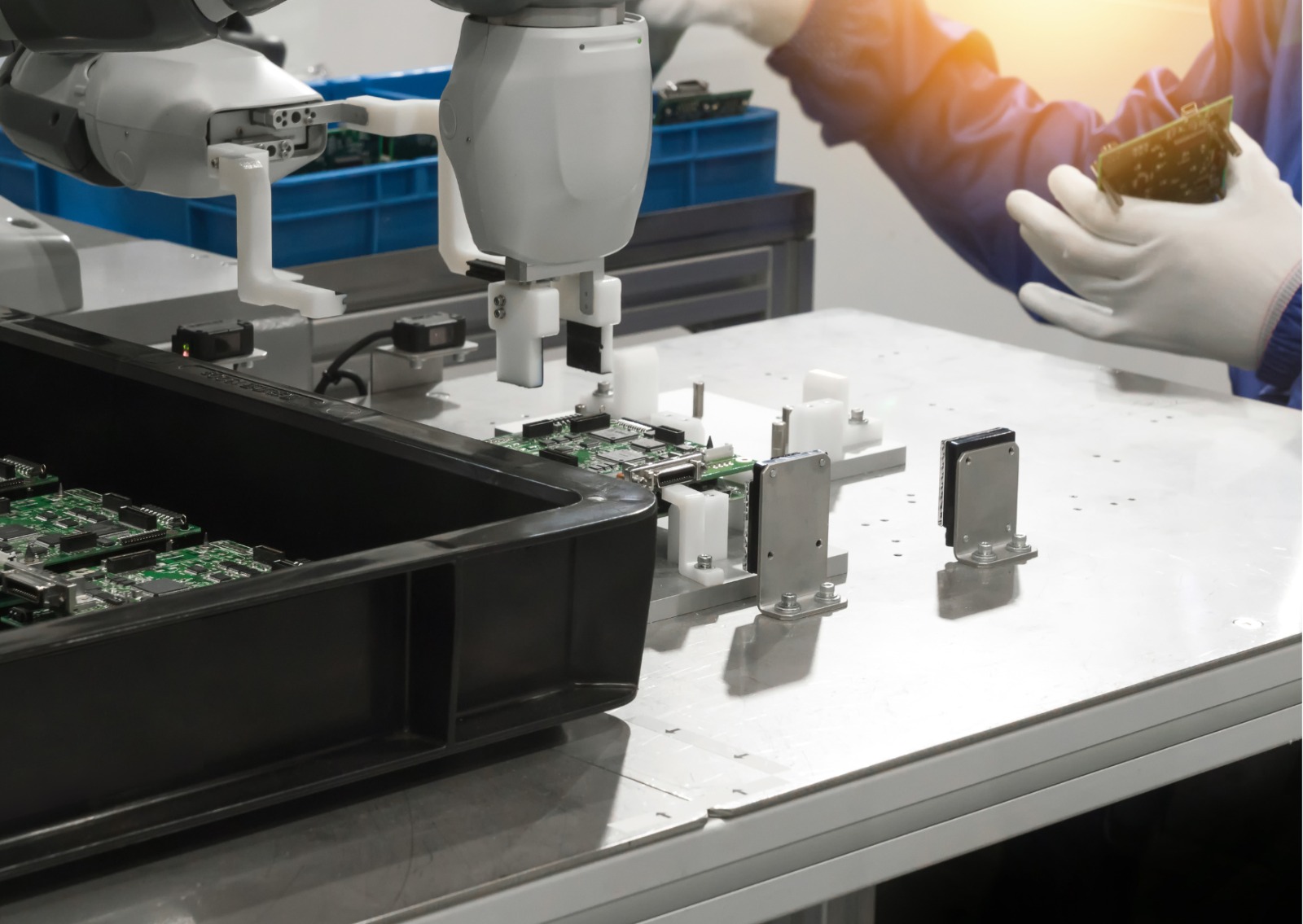There’s an innovative solution to increase productivity and efficiency that doesn’t drain resources and department budgets – cobots. Cobots, otherwise known as collaborative robots, could be the next leap your company requires to aggressively face competitors in your industry. But what are collaborative robots and how are they used?
What is a collaborative robot?
A collaborative robot, also known as a ‘cobot’, is a type of advanced robot designed to work with or in-hand with humans to complete multiple complex tasks. Cobots are highly favoured in industries such as automotive, electrical and agriculture due to their ability to propel productivity, add value and enable smart production systems to be put in place.
Cobots are regularly seen performing not one, but multiple tasks that require low problem-solving skills, leaving the humans to handle more complex and higher skill set tasks.
Robots as we know them, or autonomous robots, are designed and programmed to perform only one task limiting productivity and innovation within departments and that’s why the rise of the cobot has proven so successful.
What do collaborative robots or ‘cobots’ do?
Speed and accuracy from an operational standpoint is a highly respected key performance indicator of any industry. A fiercely effective cobot will be one that is tailored to your industry’s rate of innovation and your company’s desired deliverables.
Cobots perform a range of tasks as seen here:
-Inspection of goods or materials
-Picking, adjusting and building
-Mixing, formulating, blending

What are the different types of cobots?
There are four types of cobots to be aware of, all of which lend themselves to the benefit of different industries which we will review further down. Cobots differ in how they work in collaboration with operators as seen below:
Power and force limiting cobots
These are the most commonly seen cobots where the operator and cobot have direct interaction with each other. Favoured due to there not being a need for vision systems, safety barriers, or external scanners.
Safety-rated and monitored stop cobots
Maintaining its power, the cobot becomes static and halts its motion while the operator is in the workspace. When the operator leaves the collaborative work space, the cobot performs tasks at high speeds.
Speed and separation cobots
Also called ‘fenceless’ cobots, these are able to move with the operator as long as they maintain a distance which must be predetermined prior to the start of the operation for safety reasons.
Hand-guided cobots
This cobot is equipped with a hand-guided feature. The cobot will be hand-guided and respond to an operator’s direct input to perform actions.

Which industries are using cobots?
Improved staff working conditions, cultivating customer loyalty through higher quality production and accurate forecasting and simulation contributes to the popularity of implementing cobots. Top industries taking advantage of cobot innovation are:
–Automotive – Ford, GM, Mercedes Benz, BMW and virtually every other car manufacturer uses cobots in their production
–Consumer goods
–Electronics manufacturing
–Food and beverages
–Plastics
–Life Sciences
-Agriculture
-Healthcare and pharmaceuticals
-Packaging and palletising
-Metalwork
“Cobots – the new low-cost worker”
Are cobots more cost effective than robots?
The efficacy of cobots is unquestionably the most intelligent economic investment a company can make.
The outlay of cost may be considerable but as a sure-proof investment, you are increasing the quality of goods and services for your customer, the safety of your work environment and the speed of production.
At RNA, we’re experts in feeding, handling, robotics and bespoke automation, delivering quality for more than 120 years. Drive your company to the next height with collaborative robots and email us to start driving innovation now. Request a discovery call with one of our team.